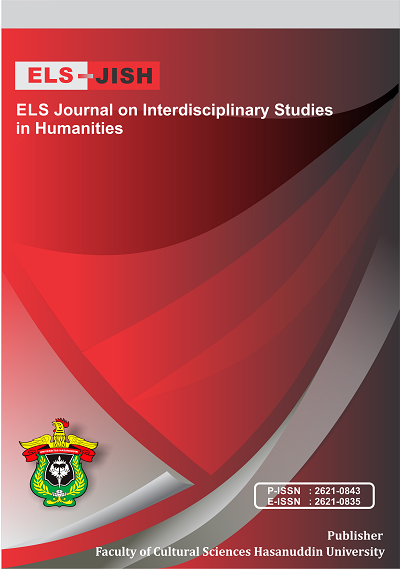“The Cure” in Margary’s The Postmortal: A Vanishing Technological and Transhumanist Mediator Towards an Ageless Existence
DOI:
https://doi.org/10.34050/elsjish.v3i4.11686Keywords:
Aging, Death, Gene Therapy, Immortality, Vanishing MediatorAbstract
The 2011 science fiction novel of Drew Magary named The Postmortal drew a world wherein the cure for aging has been scientifically and technologically advanced through gene therapy by the medical practitioner Graham Otto. This paper hinges on the ‘vanishing mediator’ as a theoretical framework synthesized by Kahambing which runs in four distinct stages for its entire process, namely, to: a.) retroactively trace the intervention, b.) evaluate the intervention, c.) identify the mediator, and d.) locate the vanishing point. Applying this to the movement, the methodological structure of the paper is divided into four parts. First, it provides a primary discussion of the social “normal” condition of people in the novel to traceably locate the intervention made by Graham Otto, a doctor, to completely halt the aging process. Second, the researcher presented a technological intervention of gene therapy in the character of Doctor Otto in making a scientific cure for aging. Third, the said intervention is argued to be a vanishing mediator. Finally, it gave a full account of the major implications of a Bostromean transhuman process and its traces in the world at large.
References
Bonifati, N. (2017). Toward post- human: The dream of never- ending life. In Jacobsen, M.H. (Ed), Postmortal society: Towards a sociology of immortality. New York, NY: Routledge.
Bostrom, N. (2005). Transhumanist values. In Adams, F. (Ed), Ethical Issues for the Twenty-First Century. Charlottesville: Philosophical Documentation Center Press.
Boyer, J. (2017). What a time to be alive: The philosophical underpinnings of Heidegger and Nietzsche in The Postmortal. The Mall, 1(10), 45-50.
Brown, G. (2017). The future of death and the four pathways to immortality. In Jacobsen, M.H. (Ed.), Postmortal society: Towards a sociology of immortality. New York, NY: Routledge.
Cave, S. (2012). Immortality. New York, United States: Crown Publishers.
Edman, T. B. (2019). Transhumanism and singularity: A comparative analysis of a radical perspective in contemporary works. Gaziantep University Journal of Social Sciences, 18(1), 39-49.
Feder, S. (1976). Attitudes of patients with advanced malignancy. In E.S. Shneidman (Ed.), Death: Current perspectives. Palo Alto, CA: Mayfield.
Gilbert, C. (n.d.). The Postmortal: First year and common reading resource guide. Retrieved from https://www.penguin.com/static/pdf/academic/ Postmortal_TG.pdf
Gordon, R. (2000). Dying and creating: A search for meaning. London: Karnac.
Heidegger, M. (1962). Being and time (J. Macquarrie & E. Robinson, Trans.). Malden, MA: Blackwell.
Hinton, J. (1967). The physical and mental distress of the dying. Quarterly Journal of Medicine, 32, 1–21.
Kahambing, J.G. (2018a). Without Sex: An Appraisal of Žižek‘s Posthumanism. International Journal of Žižek Studies, 12(2), 1-16.
Kahambing, J.G. (2018b). Diaspora as Vanishing Mediator: Emancipation of Identity for the Mamanuas of Basey, Samar. In Galang-Pereña, F., Ampil, R., Gonzales, E., & Lazaro-Zamora, N. (Eds.), Philippines and Asian Studies: Expositions, Explorations, and Expectations (pp. 183-200). Rizal: Word Prints Publishing Services, Inc.
Kahambing, J.G. (2019a). Developing the vanishing mediator as theoretical framework: Synthesis and application. The Journal of International Social Research, 12(64), 470-479. doi: http://dx.doi.org/10.17719/jisr.2019.3368
Kahambing, J.G. (2019b). Theorizing mamanuan diaspora: From vanishing mediator to performative indigeneity. Rupkatha Journal on Interdisciplinary Studies in Humanities, 11(2), 1-15.
Kahambing, J.G. (2019c). Living the Anthropocene: From the ‘End of Nature’ to ‘Ethical Prospects.’ Eubios Journal of Asian and International Bioethics, 29(4), 145-149.
Kahambing, J.G. (2019d). Bargaining with Positivism: Science’s nexus to philosophy. Eubios Journal of Asian and International Bioethics, 29(3), 95-98.
Kahambing, J.G. (2019e). The ethical nihilism of hedonistic posthuman sex. Eubios Journal of Asian and International Bioethics, 29(6), 203-207.
Kaku, M. (2020). The physics of the future. United States: Doubleday.
Klemmack, D.L. & Roff, L.L. (1984). Fear of personal aging and subjective well-being in later life. Journal of Gerontology, 39(6), 756-758.
Kreowski, H.J. (2017). Transhumanism and nanotechnology—Will old myths come true? In G.D. Crnkovic (Ed), IS4SI 2017 Summit Digitalisation for a Sustainable Society, Gothenburg, Sweden: MPDI. Retrieved from https://www.mdpi.com/2504-3900/1/3/243/pdf
Lilley, S.J. (2013). Transhumanism and society: The social debate over human enhancement. New York: Springer.
Livingstone, D. (2015). Transhumanism: The history of a dangerous idea. S.l.: Sabilillah Publications.
Magary, D. (2011). The Postmortal [Digital copy]. USA: Penguin Books.
Nietzsche, F. (2001). The Gay Science. New York, USA: Cambridge University Press.
Rossi, P. (1988). Storia della scienza moderna e contemporanea. Turin: UTET.
Roth, N. (1978). Fear of death in the Aging. American Journal of Paychotherapy, 32(4), 552-560.
Sherkow, J.S., Zettler, P.J. & Greely, H.T. (2018). Is it ‘gene therapy’? Journal of Law and the Biosciences, 5(3), 786–793. doi:10.1093/jlb/lsy020
The National Academies. (2009). On being a scientist. USA: The National Academies Press.
Turner, L. (2004). Life extension research: Health, illness, and death. Health Care Analysis, 12(2), 117-129.
Utt, M. (2012). [Review of the book The Postmortal by D. Magary]. Summer, 19(3), 20-22.
Wolenski, J. (2004). The history of epistemology. In Niiniluoto, I., Sintonen, M., & Wolenski, J. (Eds), Handbook of Epistemology. Dordrecht: Kluwer Academic Publishers.
Downloads
Published
How to Cite
Issue
Section
License

This work is licensed under a Creative Commons Attribution-NonCommercial 4.0 International License.






